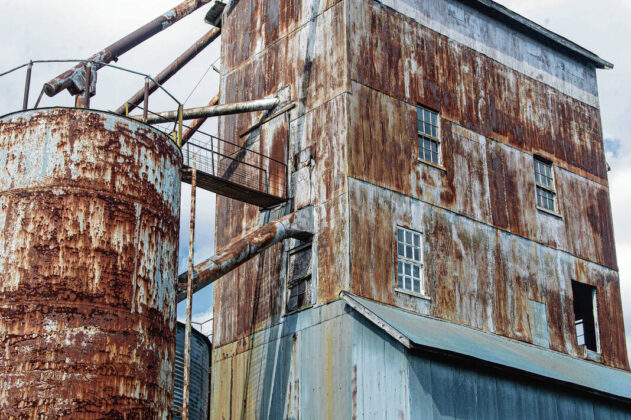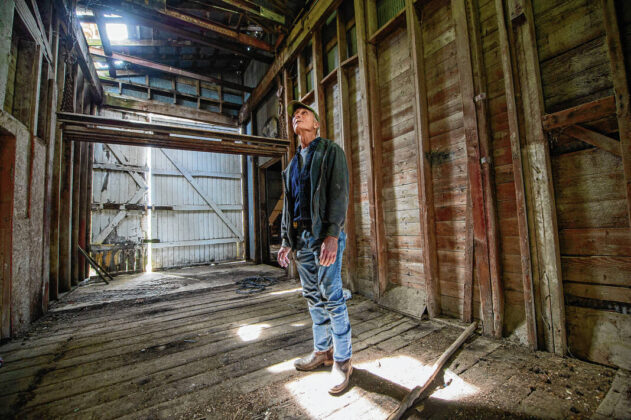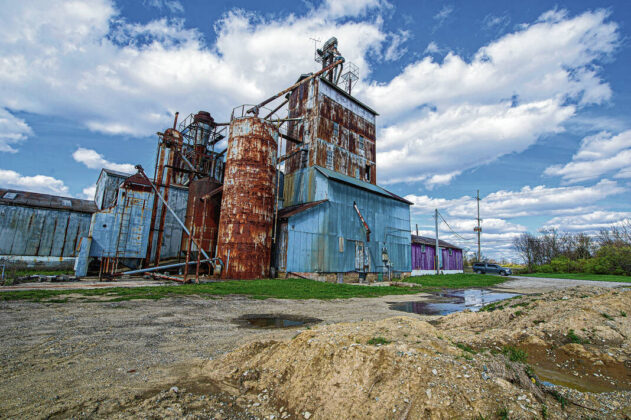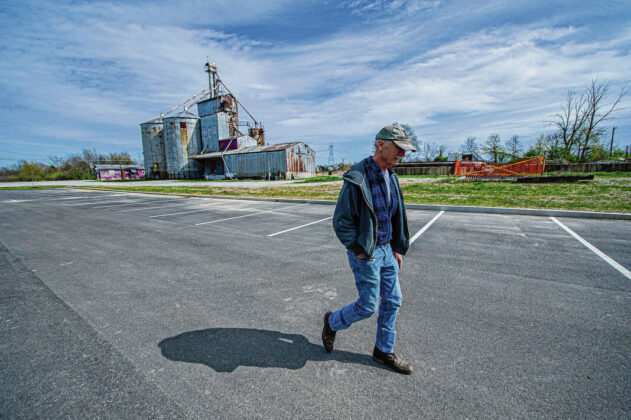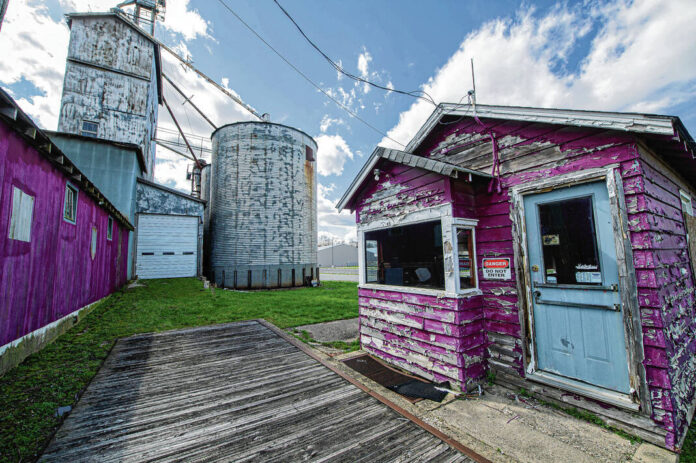
The Gem grain elevator, which first opened more than 100 years ago, is slated for demolition to make room for more parking for Realife Church. Tuesday, April 19, 2022.
Tom Russo | Daily Reporter
HANCOCK COUNTY — Mike Merlau has fond memories of the grain elevator in the community of Gem during the time his family ran it from 1985 to 2011.
In many of those years, the property maintained its longtime reputation as a gathering spot with regulars who visited every day.
“I met a lot of interesting people and heard a lot of stories,” Merlau said.
But now it towers over CR 500W south of U.S. 40 scorched in rust and with purple paint flaking off its old storefront.
“It doesn’t deserve to die like it has, not at all,” Merlau said. “Its end wasn’t what I thought it would be.”
That end is the upcoming demolition of the grain elevator property’s structures to make way for more parking at the church just to the north. While the way agriculture has modernized may have rendered the elevator obsolete, it hasn’t diminished the feelings of those who have admired it as the landmark it’s been for more than a century.
Online Hancock County property records indicate the grain elevator was first built in 1919.
Realife Church bought the property and the former Family Fun Fitness just to the north in 2020, and recently finished renovating and moving into the space.
Lead pastor Adam Detamore said the church has been operating in its new location for over a month and has already seen attendance almost double to an average of around 1,400.
“We just need the parking spaces,” Detamore said.
He said the church is parking 50 to 60 vehicles at nearby Adaggios Banquet Hall down U.S. 40 on Sunday mornings and shuttling parishioners.
Demolishing the elevator will allow the church to add a little over 100 parking spaces, Detamore said. He hasn’t received a hard date from the contractor yet, but has been told the tear-down could possibly commence before the end of this month.
A couple people in the community expressed interest in trying to salvage part of the property, Detamore said, but determined it wasn’t cost-effective.
The Hancock County Assessor’s Office lists the elevator’s condition as “very poor.”
A farming family had been using the elevator for the last several years, Detamore said, adding the church let them take some of the silos.
“We know anytime that there’s change that there are people who feel both sides of it,” Detamore said. “There’s lots of great memories that people have there, and we’re looking forward to making a bunch more in the future.”
Merlau said the elevator had a grain capacity of about 160,000 bushels and that its store sold many kinds of animal feed and pet foods.
He recalled the train depot in Gem across the street from the elevator for a rail line that once served multiple elevators before the line was removed in the 1980s.
“It’s a shame to see all these little towns disappear,” Merlau said. “…One person’s progress is another person’s demise.”
Merlau said the elevator remained in his family for a few years following its closure before it was sold.
“I hate to see it go, I really do,” he said. “It’s a big part of my life.”
Cathleen Huffman, a Greenfield-based artist, has traveled the state photographing, sketching and watercolor-painting historical grain elevators, including for a project that was part of Indiana’s Bicentennial Celebration in 2016. The Gem elevator is among the works in her collection.
“Historical grain elevators are a huge part of Indiana’s story because agriculture is so important for many of our farming families and communities, especially in the early days,” Huffman said.
She remembers heading out to the elevator several years ago with fellow plein air painters to capture the sight with their watercolors. Members of the Merlau family joined them and shared stories about the subject on their canvases.
“It was a beautiful day, and it was a really neat thing to paint,” Huffman said.
She was saddened to learn of its impending demolition.
“I was hopeful that something would be able to help save it, somebody would come along and have a purpose for it,” she said.
She applauds situations in which adaptive reuses are able to be found for historical grain elevators, like The Depot restaurant in Greenfield, housed in an elevator with roots dating back to 1906.
Huffman noted how grain elevators were often built about 10 miles apart so farmers of the area could drop off their grain and make it home at a reasonable time. Now, however, most operations are hobby farms or massive enterprises.
“So the grain elevator doesn’t serve as the center of a community as it used to,” she said.

